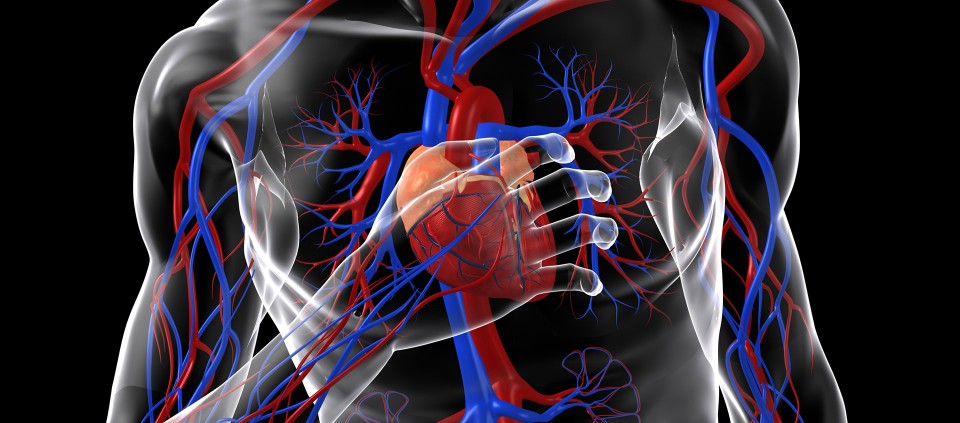Exploring the Physiology of Emotions

Our vital organs and glands are the warehouses of our emotions. And when we are balanced emotionally, our life unfolds in a healthy, easeful way. We are able to respond to everyday problems calmly, and we interact with others from a place of confidence and ease.
But what happens when we get flustered by events or interactions with others, and lose our emotional balance?
Emotions such as anger, sadness, anxiety, and jealousy can be debilitating. We may find ourselves frozen on the spot, at a loss for words and unable to react. We may find ourselves feeling threatened and wanting to run away, or feeling irritated by the person or situation.
While we process our thoughts and emotions in the mind, that doesn’t mean that our emotions are actually created there. We look for the causes of our emotions, which many times leads us to focus on the person or situation that originally triggered us to feel this way—by doing or saying something that felt hurtful or wrong, or by failing to do or say what we expected or hoped for. As we churn our thoughts around a subject, our emotions tend to escalate, giving fuel to more thought and, in turn, more emotion. The more the story is embellished, the more the fire of the emotion spreads. Thought and feeling stimulate each other and grow in intensity and depth, and we end up being held hostage to our emotions.
While it is easy to blame others for having created an emotion in us (sometimes rightfully and sometimes not), it does not change the fact that the emotions are inside our body and have a hold on our being.
Where do emotions live? Where are they born? Notice how physical the sensations of emotions are. When we live in a state of intense emotion over an extended time, it has repercussions on our health.
But why do we feel these emotions so viscerally? When we get angry, we may begin shaking. When we are sad, we may find ourselves sobbing and feeling drained and weak. Anger can produce high blood pressure and ulcers.
Chinese medicine looks closely at the organs and what each one of them secretes, identifying the place of birth of each emotion. Anger, for example, is born in the liver, according to Chinese physicians. When the bile of the liver is produced in excess, it overflows into the blood and creates that sensation through the whole body. Similarly, sadness lives in the lungs, fear in the kidneys, frustration in the spleen. Therefore, when one of our organs or meridian is out of balance, we have a tendency toward a specific emotion.
Changing others and their behavior toward us is anywhere from difficult to impossible. Think of a time when you tried to change someone. How’d it go? While it is important to examine the behaviors of others who we come in contact with, it is equally important to look inward and notice if certain emotions are regular visitors.
Internal organs and glands are where the emotions are created before they are distributed. Hormones are secreted and enter the bloodstream and, as the emotions flow through the body, they take over our nervous system and our perception of reality. When strong emotions come up, our nervous system perceives an immediate danger, and an ancient mechanism of protection arises. The amygdala is activated and sends signals to the adrenals to produce cortisol and adrenaline. We immediately find ourselves in a state of fight, flight, or freeze. Neural activity moves away from our prefrontal cortex—where love, compassion, empathy, and intuition live—and is trapped in the amygdala, where the mammalian self lives. In this state, we are unable to react in a healthy and logical way. Empathy, love, compassion, and intuition are hijacked by our chemistry and we’re unable to react rationally. Instead, we react towards the person or situation as if it is life threating, and we’re unable to make the right decisions or say the right things.
On the other hand, when our internal organs are healthy and vibrant, our meridians are open and our endocrine system is steady. We are well balanced, strong, and in a place of equanimity.
Yoga balances out the whole body. In each posture, we are opening one, two, or a set of meridians—clearing them out of triggers and old patterns. Through breath work, we steady our endocrine system, and through meditation, we steady the mind.
From a place of balance, we can recognize the actions and behaviors of others as out of alignment or integrity, but we do not have to take them personally. With a steady flow of energy moving from the heart to the prefrontal cortex, we live with clarity and discernment. We don’t react from a place of old patterns all the time, and we don’t need to take on “stuff” that doesn’t belong to us.
Through the discipline of yoga, we find a place of balance and clarity and, from this place, we can make better choices in life and act in a way that will support our evolution and growth. We can feel into the emotion that is occurring in our life in response to events and reactions, and design our yoga practice to accommodate the balance of meridians accordingly. Once you understand what emotion lives where, and what posture opens what meridian, you can tailor your practice in order to balance out the meridian and respective organ—and thus balance the emotion and come into greater clarity.
Find out about upcoming programs with Ray Crist at Kripalu.
© Kripalu Center for Yoga & Health. All rights reserved. To request permission to reprint, please email editor@kripalu.org.
Ray Crist, a Kripalu Yoga teacher and shaman’s apprentice, teaches how to use yoga and shamanism to live a balanced, empowered life.
Full Bio and Programs